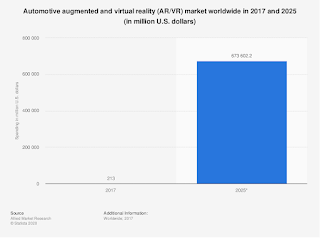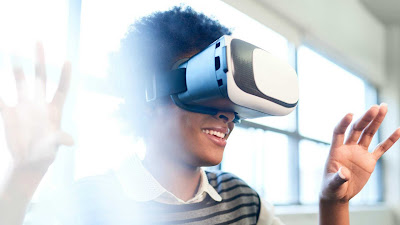The Increasing Popularity of Virtual Reality in the Automotive Industry
In the 21st century, every single day a new form of
technology is launched or researched upon. Thus, it is not surprising that
industries are constantly changing and updating themselves. And the automotive
industry is not far behind. It is always looking for ways to increase output,
enhance quality, make products cost-efficient and market them easily. Hence,
the industry is now increasingly relying on VR Training Solutions for
designing, manufacturing, as well as marketing.
Ways in which VR is changing the automotive industry
Virtual Reality is assisting the industry in making huge
strides. From reducing costs to providing better training to employees, VR is
revolutionizing the way the industry works. Here are some other ways in which
VR is helpful:
1.
Prototypes
Making changes in the designs after a brand new prototype
has already been built is not only time-consuming but also costly. In order to
address this issue, the industry at large is now leveraging virtual
reality.
Prototypes are designed and then created virtually. This
helps the designers and the engineers in coming up with models that are
optimized in terms of their capacity and size. Virtual prototypes also help in
detecting errors way earlier in the process. It also becomes easier to find
faulty connections between vehicle parts and resolve the faults.
2.
Showrooms
Although a relatively new concept, virtual showrooms are
easily becoming a favorite. They are efficient and interesting. Such showrooms
are capable of offering an immersive experience to customers. Customers get to
view both the interiors as well as the exteriors of various models. They can
easily change the colors of the vehicles and if they need customization then
they can also get a preview of that color. Dealerships do not have to stock
multiple vehicles just for the sake of displaying them.
3.
Driving
Simulation
A virtual vehicle simulator provides learners with the
experience of driving an actual vehicle but virtually. Learners can explore
various features of the vehicles such as speed, engine, gears, navigation and
much more. This technology is helpful for learners as well as for individuals
who want to test drive vehicles. Although car stimulators are quite popular,
bus and truck driving simulator options are also available now. This is
helpful learning to drive vehicles without any risks.
4.
Training
Salespersons
Virtual Reality Training also offers a great opportunity for
sales and marketing. With the help of VR, dealerships can now offer training to
staff members by creating various customer scenarios. This can help them handle
customers better and cater to their needs. Essentially, it helps members in
optimizing the customer experience.
5.
Training
Engineers
Before the advent of virtual reality, the automotive
industry relied heavily on observational learning. Thus employees were expected
to learn how to assemble different models by just observing. Evidently, this
can result in costly mistakes when the trainee starts assembling models. VR is
capable of providing learners with more hands-on experience.
Conclusion
Virtual reality simulators are changing the ways in which
the industry works. Whether a company is making use of a bus driving simulator to teach new
drivers or a company is hosting a virtual auction, there is no denying that
virtual reality has made things easier and more efficient.




Comments
Post a Comment